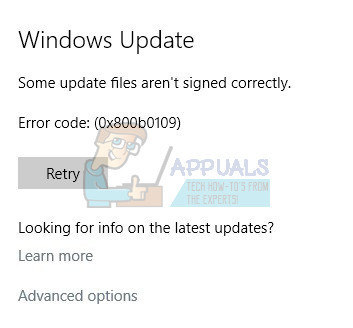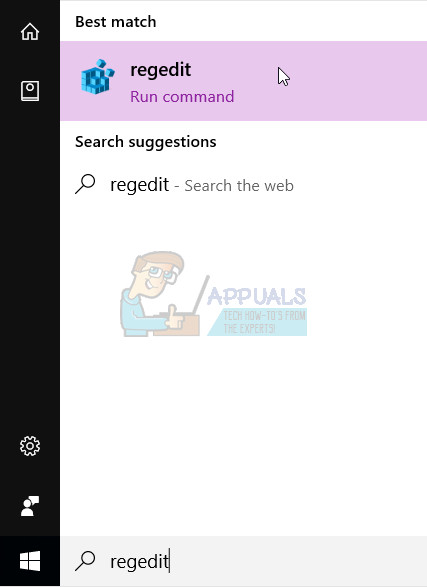Fix: Some Update Files aren’t signed correctly on Windows 10
Error code 0x800b0100 and 0x800b0109 means that Windows Update is trying to install an update, but a file that Windows Update needs is either damaged, or missing. This happens a lot, especially with Windows 10 and the fact that it still has a very unstable way of getting updates. Even though Microsoft has constantly been fixing it, it’s still not working as it should be and a lot of users are getting errors, such as this one.
You will get this error if you try to run Windows Update and download and install new updates, be it a security update or a cumulative update, and it will fail. You will get this error code and the update will fail to install. In almost all cases, no matter how many times you restart the computer etc., the update will continue to fail constantly and you won’t be able to update it no matter what.

Fortunately, there are a few ways you can go about solving this issue. If the first solution doesn’t work for you, move on to the next one, as they all work in different situations.
Method 1: Run the Windows Update troubleshooter
This issue with Windows Update, along with a couple of others, can be solved by running the Windows Update troubleshooter. You can download the tool here, choose the appropriate version for your version of the operating system. Once you download it, simply head to your Downloads folder and run it. Follow the instructions until the end, and try installing the updates again. They should be able to install now without any problems, but if there are issues again, move on to the next method.
Method 2: Run the DISM tool
The Deployment Image Servicing and Management tool is a command-line tool that comes built-in with Windows, and is used to service a Windows image. It often fixes problems with Windows, from small ones like this one, to larger ones that you might be facing. Running it is fairly easy, but make sure you follow the instructions carefully, as making a mistake can do more damage than good.
- Press the Windows key and X on your keyboard simultaneously. From the menu, choose Command Prompt (Admin).
OR
- Press the Windows key and type in Right-click the result, and choose Run as administrator.
- Once you open the Command Prompt using any of the two ways above, you should type in the following commands. Make sure to press Enter on your keyboard after each one, in order to execute them, and make sure not to make a typo.
dism.exe /online /cleanup-image /scanhealth
dism.exe /online /cleanup-image /restorehealth
- Either type in exit and press Enter, or simply close the Command Prompt window.
- Try running Windows Update again. The updates should be working flawlessly now.
Method 3: Use the Registry Editor
The Registry Editor is a very powerful tool, just as long as you know what you’re doing. It is advisable that you back it up before you modify anything, as it may cause problems, and you will want to have a safe solution. Once you open it (see step 1 below), just click File on the top left corner, and choose Export. Set your settings and save a backup of the registry.
- Press the Windows key on your keyboard, and type in regedit Open the result, and you should be inside the Registry Editor.

- Expand HKLM, then Software, Policies, Microsoft, Windows and finally Windows Update.
- Delete Windows Update. You’ve already backed it up, so if it doesn’t work, you can import it back in.
- Close the registry editor, press simultaneously Windows and the R key, and type in msc in the Run window. Press Enter on your keyboard to open the Services window.
- Once inside, locate Windows Update and the Background Intelligent Transfer Service. Do the same thing for both of them: right-click, choose Stop from the menu, and once both services are stopped, then right-click and choose Start for both, effectively restarting the services.
- Close the Services window and try updating again – it should be working just fine.
Even though Windows 10 has been out for a while now, and there have been numerous updates and upgrades for the users, it is no secret that it still has quite a few bugs and quirks here and there, especially with the updates. However, if you’re getting this specific error, one of the methods above will undoubtedly help you, so don’t be afraid to try them.